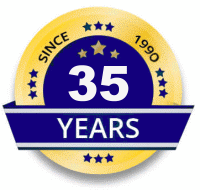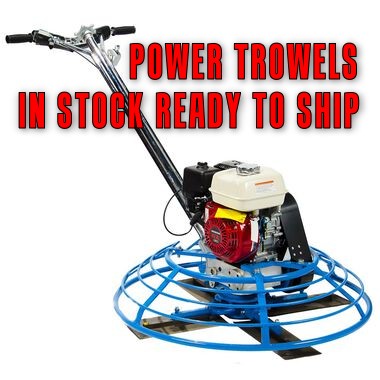LGMG AR45JD Articulating Boom Lift, Deutz Diesel Motor Drive, 45′ Platform Height, Indoor/Outdoor
Safety Information
AR45J Articulating Boom Lift
Operation and Safety Manual
1.1 Danger
Failure to follow the instructions and safety rules in this manual may cause death or serious injury.
1.2 No operation is allowed unless
You have understood and practiced the rules for safe operation of the vehicle in this manual.
1) Avoid dangerous situations. Know and understand the safety rules before
proceeding with the next step.
2) Always perform a pre-operation inspection.
3) Always perform a pre-use functional test.
4) Check the workplace.
5) Use the vehicle only for its intended purpose.
6) Read, understand, and follow the manufacturer's instructions and safety rules
- safe operation manuals and vehicle decals.
7) Read, understand and follow user safety rules and work site regulations.
8) Read, understand and follow all applicable government laws and regulations.
9) You have received the training on safe operation of the vehicle.
1.3 Classification of Hazards
△! Notice
Classification of hazards
The meanings of symbols, color codes and characters of LGMG North America’s products are as follows:
Security warning symbol: are used for warning of potential personal injurie
Observe all safety instructions below these signs, to avoid situations
causing potential personal injury and death.
Red: Signifies dangerous situations. If not avoided, will result in personal
death or severe injury.
Orange: Signifies dangerous situations. If not avoided, may result in personal death or severe injury.
Yellow: Signifies dangerous situations.
If not avoided, may result in minor or intermediate personal injury.
Blue: Signifies dangerous situations. If not avoided, property loss or damage
can occur.
1.4 Intended Purpose
This vehicle is only used to lift operators and their tools and materials to high-altitude workplaces.
△! Caution
It is strictly forbidden to use the
machine to carry loads.
1.5 Safety Sign Maintenance
1) The operators should always keep in mind their safety when replacing any missing or damaged safety signs.
2) The safety decal should be cleaned with mild soap and water.
3) Do not use solvent-based cleaners as they may damage the material of the safety decal.
1.6 Risk of Electric Shock
1) This vehicle is not insulated and is not provided with electrical shock protection when it comes into contact with or near electrical wire.
2) This vehicle should be kept an adequate safety distance from power line and
electrical equipment according to applicable government laws and regulations and the following table.
Voltage Required clearance
0V~50KV 10ft
50KV~200KV 15ft
200KV~350KV 20ft
350KV~500KV 25ft
500KV~750KV 35ft
750KV~1000KV 45ft
3) The effects of strong winds or gusts on the movement of the platform, the swinging and slackening of the wires should be considered.
4) If the vehicle comes into contact with live wires, keep away from the vehicle. No one is allowed to touch or operate the vehicle on the ground or platform before cutting off the power supply.
5) Do not operate the vehicle during lightning or storms.
6) Do not use the machine as a ground wire when welding.
1.7 Risk of Tipping
The personnel, equipment and materials on the platform may not exceed the maximum load capacity of the platform.
Maximum load AR45J/AR52J
Maximum number of people 2 people
Maximum allowable wind speed 12.5m/s/28mph
Maximum platform working load 230kg/510lbs
1.8 Safety in the Work Area
1) The boom can be lifted or extended only when the vehicle is on a solid, flat surface.
2) When the platform is lifted, drive speed may not exceed 0.62mph.
3) The tilt sensor may not be used as a level indicator. The alarm on the turntable will sound only when the vehicle is heavily tilted.
4) When the alarm sounds: Do not extend, rotate or lift the boom beyond the horizontal plane. The vehicle should be moved to a solid, level surface before lifting the platform. If the alarm sounds when lifting the platform, the boom should be telescoped carefully and the platform should be lowered. Do not rotate the boom during lowering. The vehicle should be moved to a solid, flat surface before lifting the platform.
5) For outdoor operation, do not lift the boom when the wind speed may exceed 28mph. If the wind speed exceeds 28mph. after the boom is lifted, the boom should be lowered and do not continue to operate the vehicle.
6) Do not operate the vehicle in strong winds or gusts. Do not increase the surface area of the platform or load. Increasing the area exposed to the wind will reduce the stability of the vehicle.
7) Do not operate the vehicle with the upper control box when the platform is caught, jammed, or other nearby objects are blocking its normal movement. If you want to operate the vehicle with the lower control box, you must operate it after all personnel have left the platform.
8) In the telescoped state, the vehicle should be operated carefully and slow down when driving on uneven terrain, gravel, unstable or smooth surfaces, near holes or steep slopes.
9) When the boom is lifted or extended, the vehicle may not drive on uneven terrain, unstable surfaces, or other dangerous conditions, or near these areas.
10) Do not push or pull any object that is outside the platform.
11) Do not use the vehicle as a crane.
12) Do not place, tie, or hang any loads on any part of the vehicle.
13) Do not use the boom to push the vehicle or other object.
14) Do not make the boom contact adjacent components.
15) The limit button switch may not be changed or disabled.
16) The boom or platform may not be tied to adjacent components.
17) The load may not be placed outside the perimeter of the platform.
18) Do not modify the elevating work platform without the prior written permission of the manufacturer. Installing additional equipment for placing tools or other materials on the platform, pedal plate or guardrail will increase the weight of the platform and the surface area of the platform or increase the load.
19) Do not modify or damage any parts that may affect the safety and stability of the vehicle.
20) Key parts that affect the vehicle’s stability may not be replaced with parts of different weights or specifications.
21) Do not place the ladder or scaffolding in the platform or against any part of the vehicle.
22) Only tools and materials that are evenly distributed and can be safely moved by people on the platform can be transported.
23) Do not operate the vehicle on a moving surface or on a vehicle.
24) Make sure all tires are in good conditions and the nuts are properly tightened.
25) The ambient temperature in which the vehicle can be operated is -15°C ~40°C.
26) The allowable fluctuation of the vehicle's supply voltage is ±10%.
1.9 Risk of Crushing
1) Do not place arms, hands, or fingers in any position where there is a hazard of potential crushing.
2) When the machine is being operated from the ground using the control unit, use good judgment and carefully plan the travel path of the machine and boom. Keep a safe distance between the operator, machine and any fixed objects, walls, or buildings.
1.10 Risk of Operating on Slopes
Do not drive the vehicle on a slope that exceeds the vehicle’s slope and side slope ratings. The slope rating applies to the vehicle that is in the retracted state.
Maximum slope rating, stowed position
Platform downhill 30% (17°)
Platform uphill 45% (24°)
Side slope 25% (14°)
△! Warning
When the vehicle is going downhill, select the slow speed mode (turtle)
set at the upper control!
1.11 Risk of Falling
1) During operation, the personnel on the platform must wear the full body safety
harness and secure it with a seat belt hook to the approved rope attachment point.
Only one hook can be tied to each rope attachment point.
2) Do not sit, stand or climb on the guardrail of the platform. Always stand on the platform floor firmly.
3) After the platform is lifted, the operator may not climb down the boom.
4) Keep the platform floor free of debris.
5) Lower the platform entry lifting rod or close the entry door before operating.
6) Do not operate the vehicle if the guardrail is not installed properly or the entrance door fails to guarantee safe operation.
7) Do not enter or exit the platform unless the machine is in the telescoped position.
1.12 Risk of Collision
1) When starting or operating the vehicle, pay attention to the blind spots within the line of sight.
2) When rotating the turntable, pay attention to the position of the boom and the tail of the turntable.
3) Check the work area to avoid obstacles or other possible hazards.
4) When grabbing the platform guardrail, be careful of the risk of squeezing.
5) Lower the boom when there are no people or obstacles in the area underneath.
6) Limit the drive speed according to the ground conditions, congestion levels, slope, personnel location and any other factors that may cause a collision.
7) It is not allowed to operate the vehicle on any crane or moving overhead vehicle route unless the crane control unit has been locked and/or precautions have been taken to prevent any potential collision.
8) When operating the vehicle, avoid any dangerous behaviors.
9) Users must abide by user rules, workplace rules and government rules regarding the use of personal protective equipment.
10) The direction arrows of the drive and steering function of the upper control box should be noted.
1.13 Risk of Component Damage
1) Do not use any battery or charger greater than 12 V to start the engine.
2) Do not use the vehicle as a ground wire when welding.
3) Do not use the machine in the place where there may be magnetic field.
1.14 Risk of Explosion and Fire
Do not operate the vehicle where it is dangerous or where flammable or explosive
gases or particles may be present.
2) Do not start up the engine if liquefied petroleum gas (LPG), gasoline, diesel, or other explosive substances are present.
3) Do not refuel the machine when the engine is running.
4) Only refuel the machine in open and well-ventilated places far away from sparks, open flames, burning cigarettes, etc.
1.15 Risk of Machine Damage
1) Do not operate a machine that is damaged or faulty.
2) Before each work shift, thoroughly perform the pre-operation inspection against the vehicle and test all functions. A damaged or faulty vehicle should be immediately tagged out and stopped.
3) Make sure all maintenance operations have been performed as specified in this manual.
4) Make sure all decals are properly positioned and easily identifiable.
5) Make sure this manual is stored in the manual box on the platform.
1.16 Risk of Bodily Injury
1) Do not operate the vehicle with hydraulic oil leaks, which may penetrate when under pressure or burn your skin.
2) Incorrect contact with any component under the cover may cause serious injury.
Only qualified authorized service personnel can access the compartment. It is
recommended that the operator perform the inspection only during the pre-operation inspection. All compartments must be closed and locked during operation.
3) Always operate the machine in a well-ventilated area to avoid of carbon
monoxide poisoning.
1.17 Battery Safety
Risk of Burns
1) The battery contains acidic substances.
Wear protective clothing and goggles when maintaining the battery.
2) Avoid spilling or touching the acid in the battery. Soda and water can be used to neutralize the spilled battery acid.
3) When the vehicle is not operated for a long time, turn off the main power switch.
Risk of explosion
1) Sparks, flames and lit cigarettes are prohibited from getting close to the battery.
The battery can release explosive gases.
2) Do not touch the battery terminals or cable clamps with tools that may cause sparks.
Risk of Electric Shock/Burn
1) Avoid electric shock due to contact with battery terminals. Remove all rings,
watches and other accessories.
1.18 Locked After Each Use
1) Choose a safe parking location that can be a solid, flat surface without obstructions or heavy traffic.
2) Telescope the boom and lower the platform.
3) Rotate the turntable to make the boom located between non-steering wheels.
4) Turn the key switch to the "OFF" position and remove the key to avoid any
unauthorized use.
5) Cut off the power when the machine is repaired or not used for a long period.
1.19 Check Tires and Wheels
This check item is conducted every 250 hours or once per quarter, whichever comes first.
Keeping tires and hubs in a good condition is critical for safe operation and good performance.
Failure of the tires and hubs may cause the platform to tilt. If such failure is not found and repaired in time, it will also cause damage to platform parts.
1) Check treads and sides of tires for scratches, cracks, punctures, and other
abnormal wear.
2) Check if the wheels are damaged, bent or cracked.
3) Check whether or not the sealing screws for tires are missing. If missing screws, if there is slight or no leakage of fillers, and no significant deformation is found for the tire body, and users can knock in screws which are slightly larger than the diameter (about 5mm/2in) of the vent hole with a
hammer. If leakage of a large quantity of filler is found, and the tire body deforms significantly, lower the platform and replace the tires immediately. |











